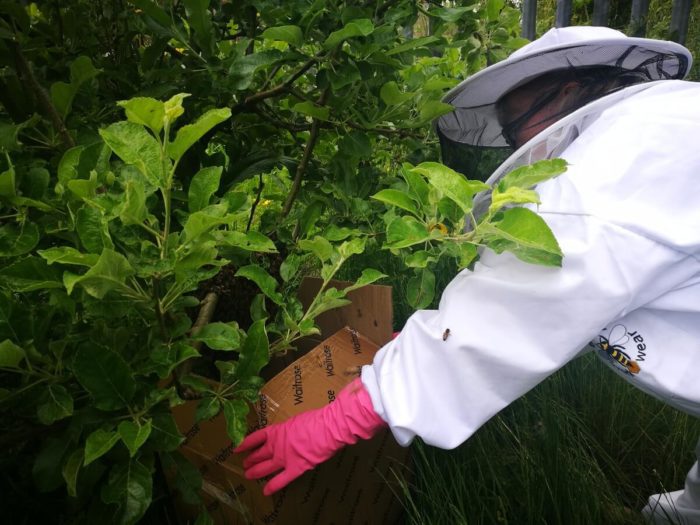We humans, with our particle accelerators and Wikipedia, like to think we are the smartest species on Earth. Yet still, a tremendous amount of knowledge and expertise remains secret from us, even though other species seem to consider it elementary.
For instance, there isn’t a single person who can fully explain the behavior of bees called ‘festooning.’
That’s right, just as you imagine a paper chain on a Christmas tree, or perhaps the elaborate stone carvings decorating the Pantheon in Paris, festooning means ‘to adorn with chains or garlands.’
Despite an almost total lack of classical architecture, PhDs in bee society also use this precise method but not for decorative purposes. We, the ‘most advanced species on Earth’, can only speculate about the exact reason behind it.
The first time I saw this as a new beekeeper, I watched a conga line of bees holding each other only by their legs (they have six to choose from, which often results in some comical postures), stretching from one side of the bar or the frame to the other to create a ‘U’ shape.
It seems that their delicate legs wouldn’t be up to holding a lot of weight, but the smart design of Mother Nature has equipped them with multiple hooks, by which they can hold on to each other solidly. The festoon is usually one bee-layer thick, and even when it’s a large one, it’s always airy and delicate.
The main question is – what is the reason for such behavior?
While there are some theories, multiple studies from around the world have only been able to conclude that (drumroll, please) there is no definite explanation yet.
However, it seems always to be connected to comb building or repairing, mostly in the spring and summer. Some say that this is the way bees measure the size of the comb-to-be, and the bees are very precise about the distance between the combs; it’s known as a ‘bee space’, and it’s precisely three-eighths of an inch.
Bees are very particular about this distance and will not waste any space. If, for example, a beekeeper adds a new bar next to an existing comb but puts it in clumsily and gets the angle wrong, the bees may begin to build a new comb along the new axis. They will quickly notice the error and start to build in between to fill the gap, making beekeepers’ hive checks very difficult.
Other bee specialists think that festooning is the way they start the process of producing beeswax or increasing its flow thanks to the cuddling group’s increased body heat, easing the secretion from the abdomen-located glands.
Some people speculate that it is a form of scaffolding, which helps the ‘builders’ move around the construction site and construct their comb.
Whatever the reason, it’s a sign of a healthy colony expanding its brood and honey-storage space. Theoretically, swarming bees are festooning too, as they hold on to each other while the scout bees are looking for a new hive.
Festooning can also take the form of a full-blown sheet of bees which holds firmly together, even when wobbled by clumsy beekeepers.
Of all the things we ‘smart’ humans could stand to learn from our buzzing friends, this kind of strength in unity is perhaps the one we need the most.




